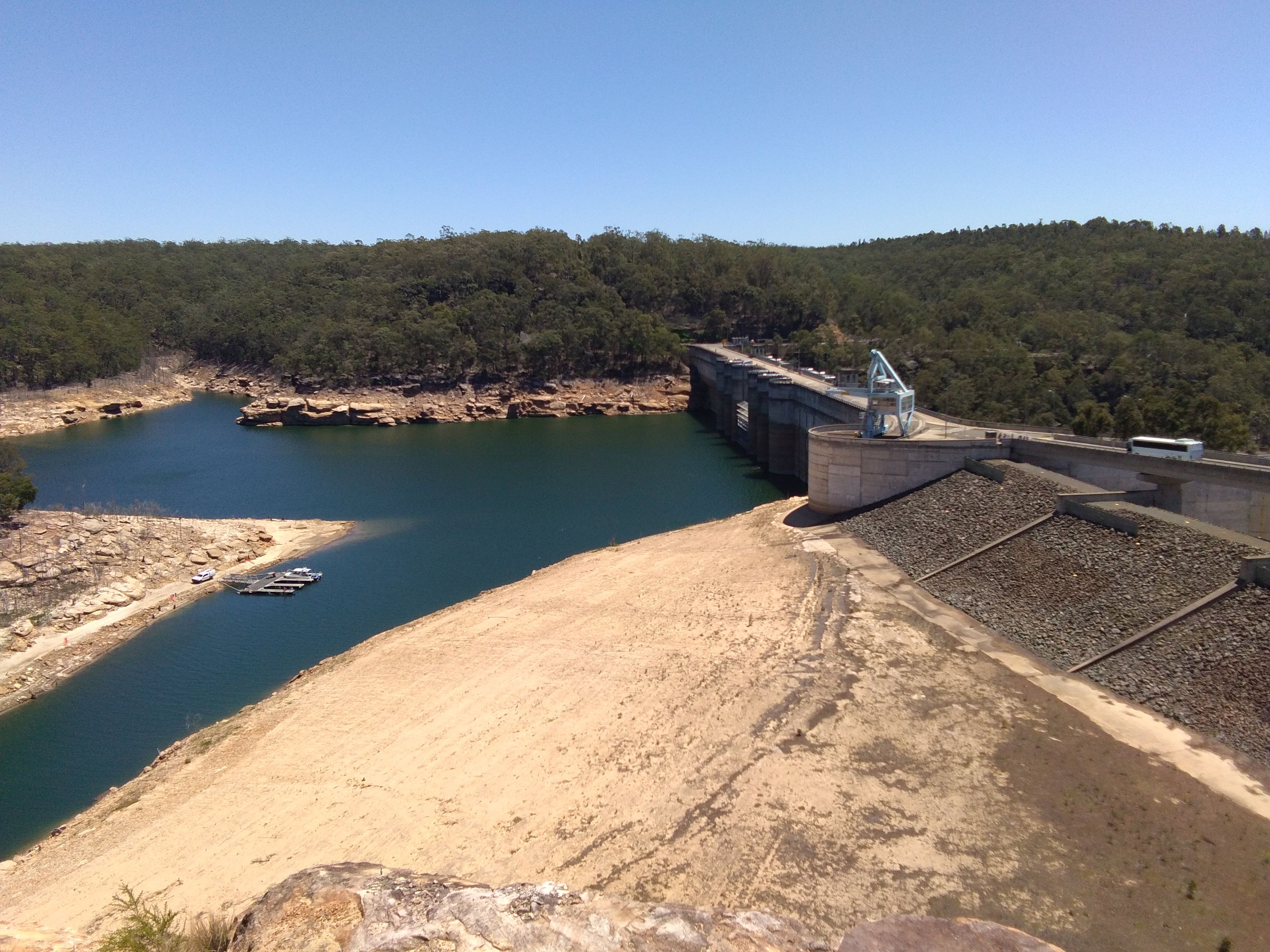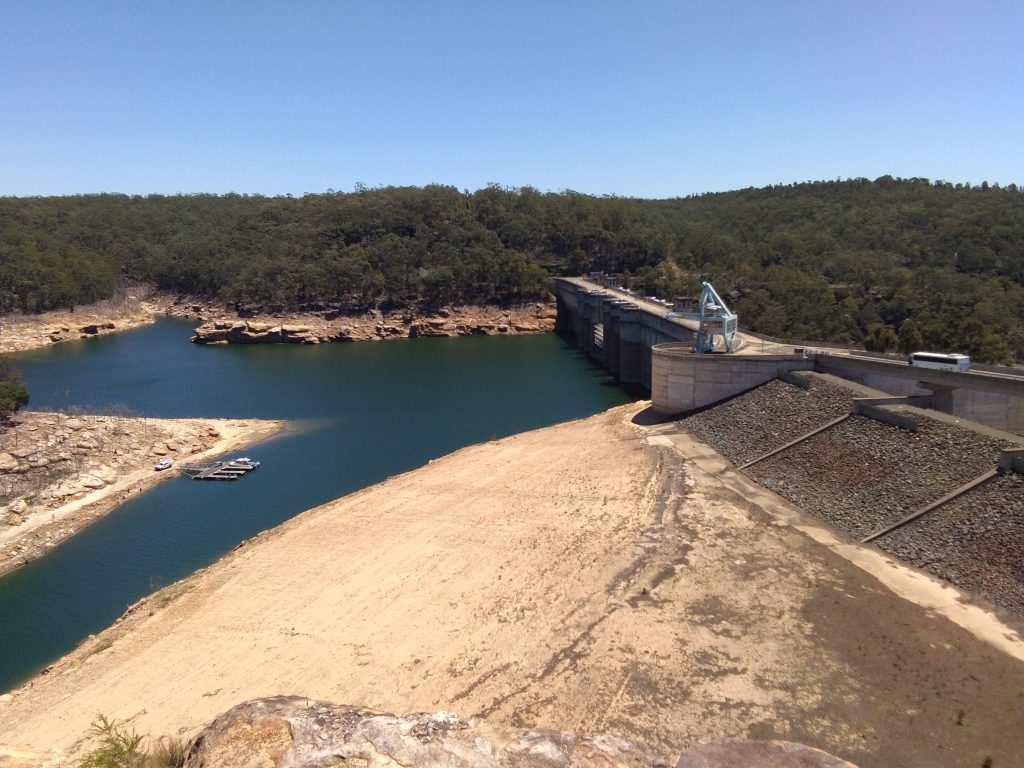
Following the submission of a complaint to the New South Wales Senate Inquiry on the Warragamba Dam, as a responsible signatory I decided to visit the dam itself. Of course, our own submission dealt with environmentally damaging projects undertaken by SMEC overseas, but looking at legendary Warragamba Dam would give me better understanding of domestic Australian context of its new project.
140-meter Dam as it is now is almost free of active public controversy, all questions are about a proposal to raise it by 14-17 meters to provide flood protection to Western Sydney. Resulting flooding of upstream areas will encroach on several national parks and the Blue Mountains World Heritage Site. Proposals to raise the dam were made by Liberal Party politicians as early as 1995 and defeated many times, but current NSW Government is especially keen to go ahead with this multi-billion project. It clearly favors most expensive and technocratic way to reduce flood risk, while the same and better results could be achieved through improving transportation system for evacuation, voluntary resettlement of low floodplain residents, better zoning regulations for flood-prone areas and so on and other less traumatic means. Dam raising does not eliminate risks of the largest 150-200 year floods, but it may reduce frequency of flooding in 20-40 year flood, thus inviting new development into the heart of the floodplain. Developers and insurance companies support the dam-raising since they expect soaring profits as additional 100000 residents move into the flood-prone area. Small local NGO – Colong Foundation for Wilderness coordinates resistance to these reckless plans.
I asked Harry Burkitt, the Colong Foundation Campaigner, to take me to the dam site. There we met with Kazan Brown – representative of Gundungurra Traditional Owners of the area and together we watched mighty reservoir half-emptied by prolonged drought. Even in this condition the Warragamba reservoir successfully supplies 70% of Sydney’s population with water, showing that the dam is fully drought-proof. No one, even traditional owners can have unimpeded access to “water-protection zone” along the reservoir. Company managing the facility – Water NSW – may make them wait for many months before allowing visitation of ancestral ceremonial sites or other culturally important areas.
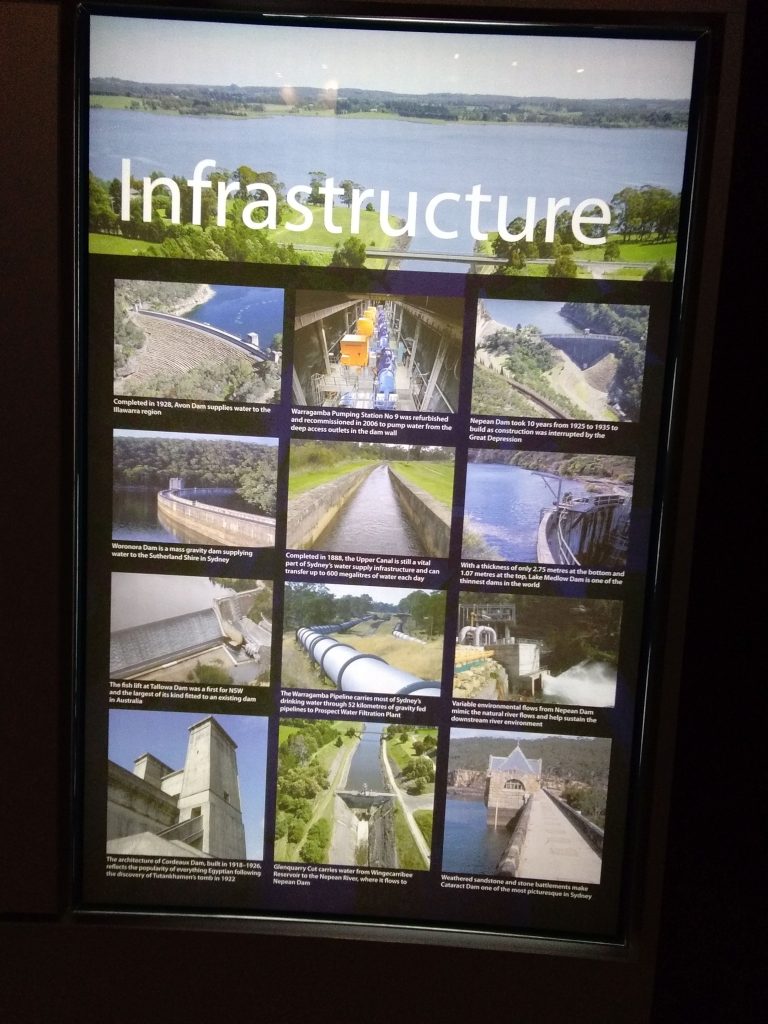
Then we examined the Visitor Center of Warragamba Dam. Amazing high-tech displays tell you how the water should be harnessed and engineered to end up in your tap and toilet. Every aspect of technical design of any water-supply machinery used in Australia is shown here. But some important information, which I am used to see in almost any dam-related exhibit around the world is clearly lacking. So I go to the manager.
-Do you have list and pictures of native fish which populated this river before dam and populate it now?
-No, sir.
– Do you have any exhibit or printed material on aquatic ecosystem of the Warragamba river?
– No, Sir.
-Do you have any description on environmental impacts resulting from construction of this dam?
-No, sir. Sorry, sir…
– Do you have anything on mitigating impacts on aquatic fauna?
– Yes, sir, we have something on fish lifts, but those are at different dam on different river. But it also belongs to the Water NSW.
– Do you have material on proposal to raise the dam?
-Yes, sir, here it is and you also can get it from a web-site.
The manager is beaming, since finally he can provide at least this information to this inquisitive visitor….
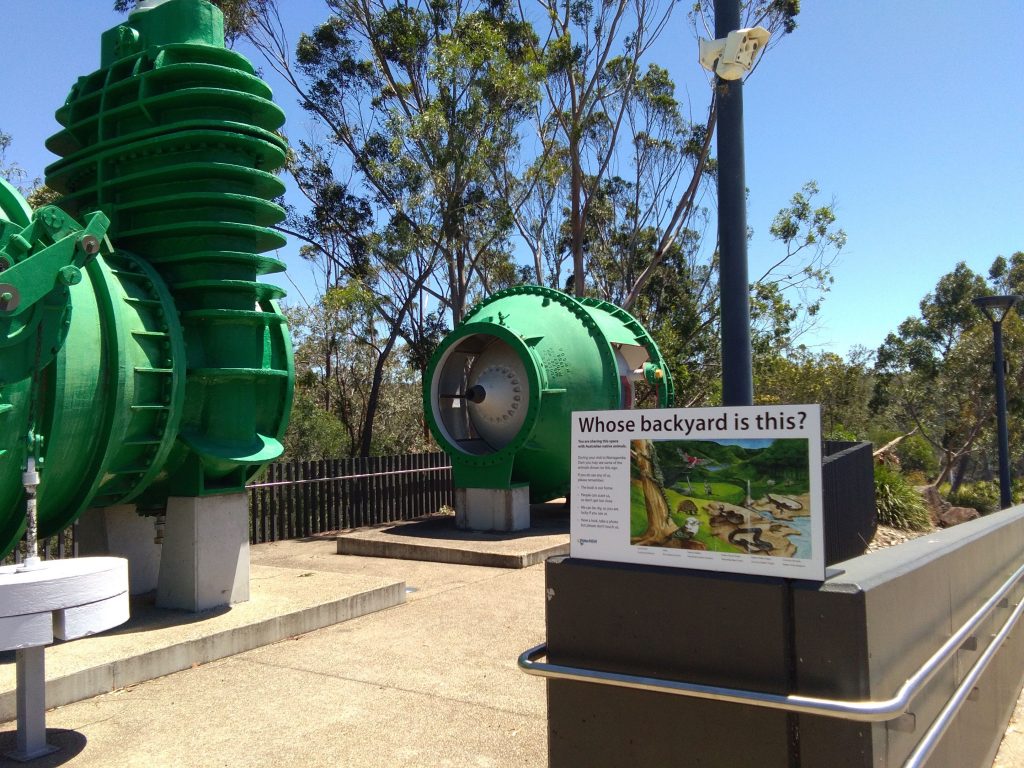
Exit from the exhibit features two giant historic water pumping valves replaced recently by new machinery. A small bill-board with blurred pictures of several marsupial mammals and reptiles with heading “whose backyard is this?” looks completely out of place in this temple of engineering.
Kazan philosophically notes: “Previously they had here a information on aboriginal owners. It was also called “Whose backyard is this?”. Then we complained about dam-raising drowning our sacred sites and they replaced that information with this zoological mosaic. When we complained they about that, they said, that as a compensation for destruction resulting from the dam-raising they might host an aboriginal exhibit at this visitor center…”
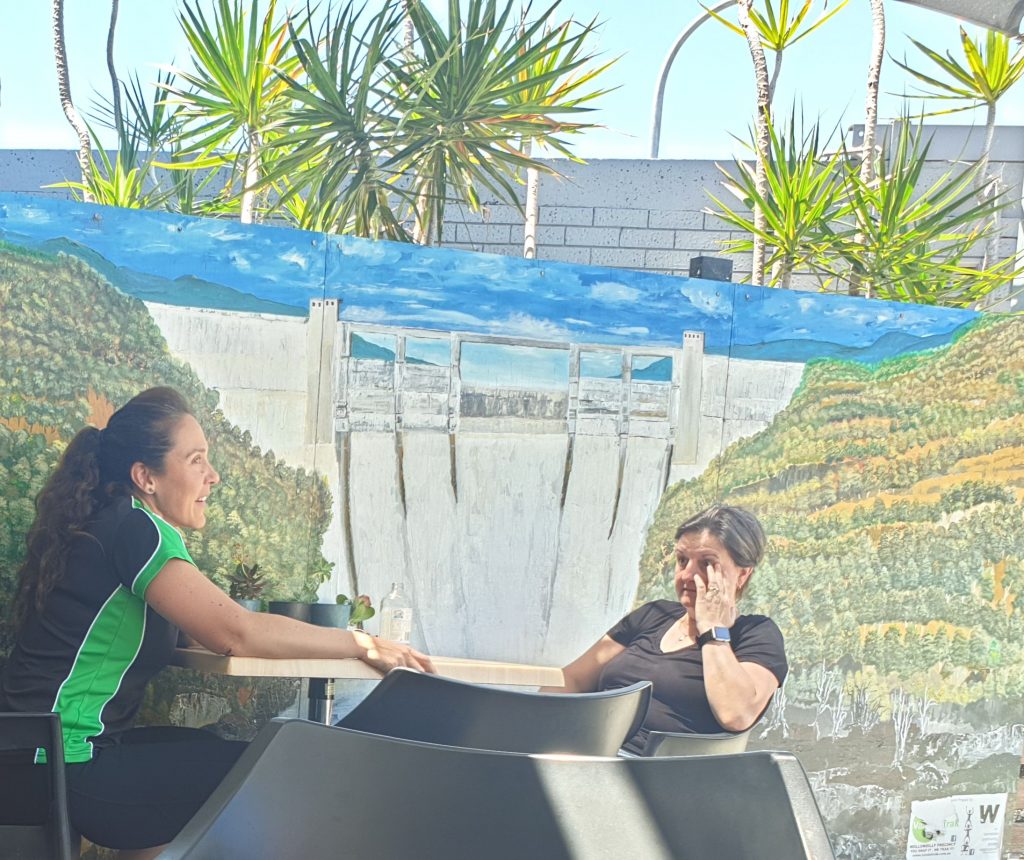
Once the dam has been built it dominates the lifestyles and dictates choices for communities around it. Visit to local cafe decorated with Warragamba Dam mural soon reminded us about that pervasive influence…
Eugene Simonov
RwB

